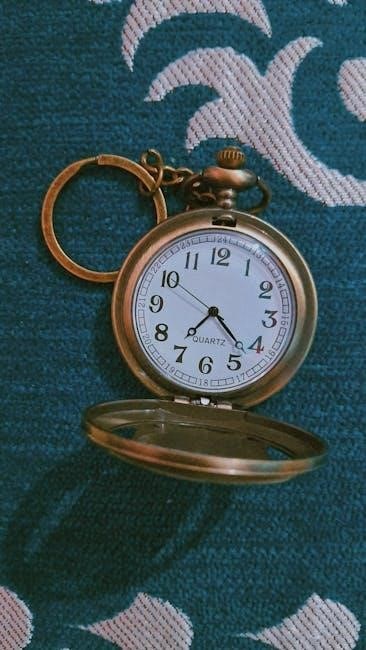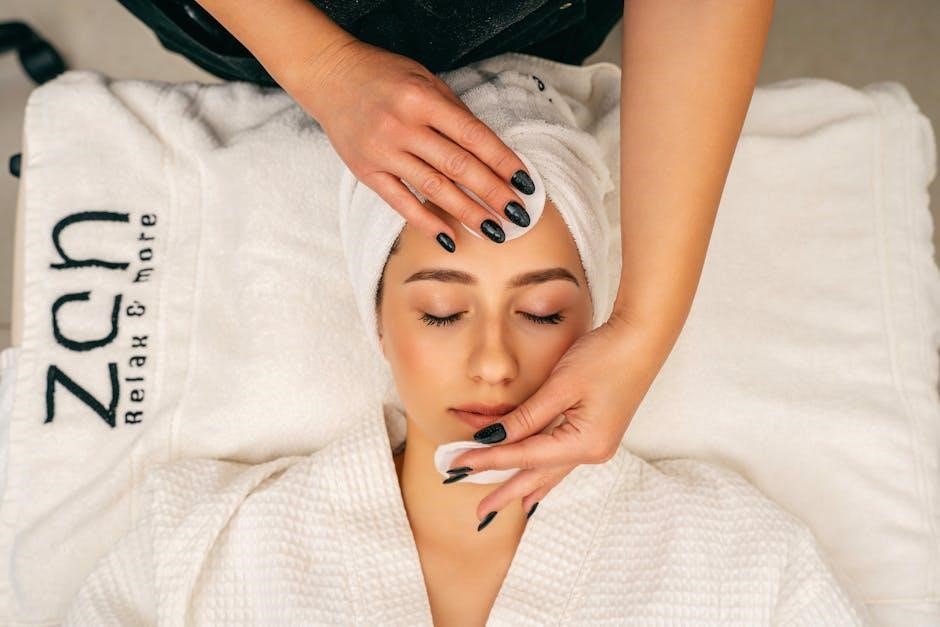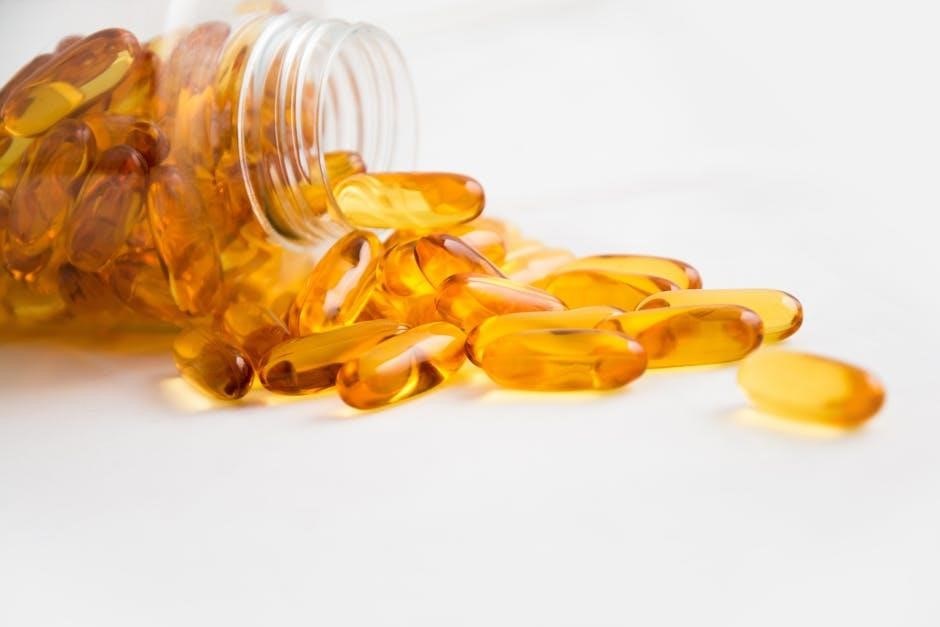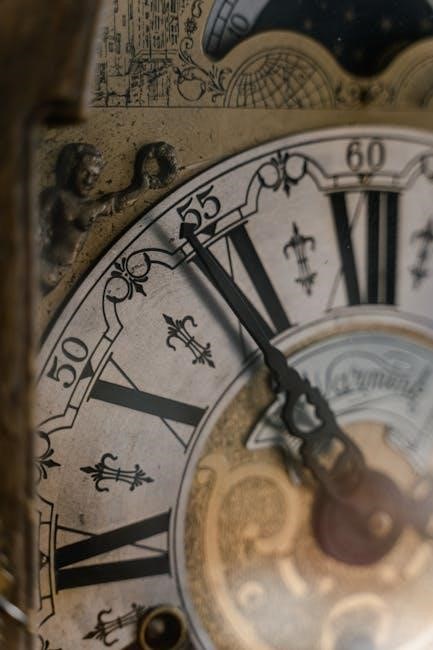The One-Minute Cure, authored by Madison Cavanaugh, introduces a controversial yet intriguing natural therapy; It claims to create an oxygen-rich environment, enabling the body to self-heal from various diseases. This method, described as scientifically proven, has sparked both interest and skepticism. The book highlights the potential of oxygen therapy to combat illnesses, offering a simple and purportedly effective solution. Its premise challenges conventional medical approaches, positioning it as a groundbreaking alternative for those seeking holistic healing options.
Overview of the Book
The One-Minute Cure, authored by Madison Cavanaugh, presents a provocative approach to health and wellness. First published in 2008, the book introduces a natural therapy that allegedly heals numerous diseases by leveraging oxygen’s therapeutic potential. Cavanaugh argues that creating an oxygen-rich environment within the body can prevent disease from thriving, enabling self-healing. The book explores the history of oxygen therapy, its scientific underpinnings, and practical applications. It also delves into the suppression of alternative healing methods and critiques conventional medicine. While controversial, the book has garnered attention for its simplicity and potential to address a wide range of health issues. A second edition was later released, expanding on the original concepts.
Author Background: Madison Cavanaugh
Madison Cavanaugh is the author of The One-Minute Cure, a book that has garnered significant attention for its controversial health claims. Cavanaugh’s background is not extensively detailed in publicly available sources, but her work centers on alternative health and natural therapies. She presents herself as an advocate for holistic healing, emphasizing the role of oxygen in combating diseases. While her ideas have resonated with some, they have also faced skepticism from the scientific and medical communities. Cavanaugh’s writing style is accessible, making complex health concepts understandable to a broad audience. Her book has been popular among those exploring alternative health options, though its claims remain unverified by mainstream science.

The Core Premise of the One-Minute Cure
The One-Minute Cure posits that oxygen therapy can create an environment where diseases cannot thrive, enabling the body to heal itself rapidly and effectively.
The Central Claim: A Universal Cure for Diseases
The One-Minute Cure claims to offer a groundbreaking, scientifically proven natural therapy that can heal virtually all diseases. By leveraging oxygen therapy, it creates an environment where diseases cannot survive, allowing the body to self-heal. This method, as described by Madison Cavanaugh, is simple, inexpensive, and effective, targeting over 50 diseases in less than a minute. While the claim is controversial, it suggests a universal solution to various health issues, challenging conventional medical approaches and sparking both interest and skepticism in the scientific and medical communities.
The Role of Oxygen in the Cure
Oxygen plays a central role in the One-Minute Cure, as it aims to create an oxygen-rich environment within the body. This environment is believed to inhibit the growth of pathogens and diseases, enabling the body to heal itself. The therapy suggests that oxygen deprivation is a root cause of many illnesses, and by addressing this, various diseases can be effectively treated. While some critics argue that simply increasing oxygen levels isn’t a cure-all, the method remains popular for its simplicity and focus on natural healing processes.

Scientific Basis of the One-Minute Cure
The therapy focuses on oxygen’s role in creating an oxygen-rich environment, claimed to inhibit disease growth. It draws on historical oxygen therapy practices, emphasizing natural healing potential.
Oxygen Therapy and Its History
Oxygen therapy has roots in early medical practices, with historical uses dating back to the late 19th century. It was initially used to treat respiratory ailments and anemia. Over time, its applications expanded to various conditions, including infections and wounds. The One-Minute Cure draws from this legacy, proposing that oxygen can create an environment where diseases cannot thrive. While modern medicine often relies on pharmaceuticals, this therapy suggests a return to elemental healing principles. Its historical foundation provides a basis for understanding the claimed benefits, though scientific validation remains a topic of debate.
Research Supporting the Therapy
Research on oxygen therapy highlights its potential in treating various conditions, aligning with the One-Minute Cure’s claims. Studies suggest oxygen’s role in enhancing immune function and reducing inflammation. Historical medical practices, such as oxygen treatment for infections, support its therapeutic use. While some anecdotal evidence and case studies report positive outcomes, the scientific community remains skeptical due to limited clinical trials. Critics argue that the therapy’s effectiveness lacks robust evidence, and its universal cure claim is unsubstantiated. Despite this, proponents emphasize its historical roots and potential benefits, advocating for further research to validate its efficacy in modern medicine.

Practical Applications of the Cure
The One-Minute Cure offers a simple, inexpensive method to enhance oxygen intake, potentially treating over 50 diseases. Its practical steps make it accessible for daily use.
Step-by-Step Guide to Implementing the Therapy
Implementing the One-Minute Cure involves simple, daily practices. Start by finding a quiet space to relax. Inhale deeply through the nose for 10 seconds, filling the lungs completely. Hold the breath for 10 seconds to allow oxygen absorption. Exhale slowly through the mouth for 10 seconds to release toxins. Repeat this cycle 3-4 times. Use an oxygen concentrator or fresh air for enhanced results. Stay consistent, ideally twice daily. Combine with a healthy diet and hydration for optimal effects. This method is easy to integrate into daily routines, making it accessible for everyone seeking natural healing solutions.
Case Studies and Success Stories
The One-Minute Cure book shares numerous anecdotal accounts of individuals who claim to have benefited from the therapy. Many report improvements in chronic pain, asthma, and even autoimmune conditions. One testimonial describes a patient with severe migraines finding relief after consistent practice. Another case involves a person with chronic fatigue syndrome regaining energy. While these stories are compelling, they lack formal scientific validation. The book emphasizes that results may vary, and success depends on consistent practice and individual health conditions. These accounts, while not scientifically proven, inspire hope and encourage readers to explore the therapy as part of a holistic health approach.

Criticisms and Controversies
The One-Minute Cure faces skepticism due to its sweeping claims and lack of rigorous scientific evidence. Critics argue that oxygen therapy alone cannot cure all diseases, calling the premise oversimplified and misleading. Many experts question the absence of peer-reviewed studies supporting its efficacy, labeling it as pseudoscience. Despite anecdotal success stories, the medical community remains unconvinced, emphasizing the need for more robust research before accepting it as a viable treatment option.
Scientific Skepticism and Lack of Evidence
The One-Minute Cure has faced significant scientific skepticism due to the lack of peer-reviewed studies supporting its claims. Experts argue that the therapy’s effectiveness remains unproven, leading many to label it as pseudoscience. The medical community emphasizes the need for rigorous testing to validate its efficacy. Without substantial evidence, the Cure’s claims are met with disbelief. Additionally, the simplicity of the method, relying solely on oxygen therapy, is seen as overly simplistic for curing a wide range of diseases. This has led to further skepticism among healthcare professionals who advocate for more comprehensive approaches to treatment.

Medical Community Response
The medical community has largely dismissed the One-Minute Cure due to its lack of scientific validation. Many healthcare professionals view the therapy with skepticism, arguing that its claims are unsubstantiated and overly simplistic. They emphasize the importance of evidence-based medicine and warn against relying on unproven methods for serious health conditions. While some acknowledge the potential benefits of oxygen therapy, they stress the need for rigorous clinical trials to establish its efficacy. Medical experts advise patients to consult with qualified healthcare providers before pursuing alternative treatments like the One-Minute Cure, ensuring safe and informed decision-making.

Legal and Ethical Considerations
The One-Minute Cure includes disclaimers stating it is for educational purposes only and not a substitute for professional medical advice. Liability issues arise as it lacks scientific validation, and ethical concerns exist regarding potential misinformation that could lead to health risks if not properly managed by consulting qualified healthcare professionals.
The publisher and author of The One-Minute Cure explicitly state that the information provided is for educational purposes only. They emphasize that it should not replace professional medical advice or a one-on-one relationship with a qualified healthcare provider. The book includes clear disclaimers to protect against liability, as it does not claim to diagnose or treat medical conditions. Readers are cautioned not to rely solely on the methods described without consulting a healthcare professional. This legal safeguard is crucial, as the therapy’s scientific validation is limited, and improper application could pose risks to individuals’ health.
Regulatory Challenges
The One-Minute Cure faces significant regulatory challenges due to its claims of being a universal therapy. As it is not FDA-approved, it is classified as a supplement, bypassing rigorous clinical testing. Health authorities remain skeptical, questioning its validity without substantial evidence. The lack of oversight raises concerns about safety and efficacy, particularly for vulnerable individuals. Regulatory bodies emphasize the need for scientific validation, complicating its acceptance in mainstream healthcare. These challenges highlight the tension between alternative therapies and conventional medical standards, underscoring the importance of evidence-based approaches in healthcare regulation.

Popularity and Reception
The One-Minute Cure has sparked public interest and controversy, attracting both intrigue and skepticism. Its popularity stems from its promise of a simple, natural therapy, yet it faces criticism from experts and mixed reviews from users.
Public Interest and Media Coverage
The One-Minute Cure has garnered significant public interest, particularly among those exploring alternative health solutions. Media coverage highlights its controversial claims, with some outlets praising its potential for natural healing, while others express skepticism. The book’s availability on platforms like Amazon, eBay, and Z-Library has broadened its reach, attracting a diverse audience. Online forums and reviews reveal mixed testimonials, ranging from enthusiastic endorsements to critical analyses questioning its scientific validity. Despite the debate, the book’s promise of a simple, inexpensive therapy continues to resonate with many seeking holistic approaches to health.
Online Reviews and Testimonials
Online reviews of the One-Minute Cure reveal a mix of enthusiasm and skepticism. Many users report positive experiences, citing improved health and well-being, while others question the lack of robust scientific evidence. Testimonials often highlight the therapy’s simplicity and accessibility, with some claiming significant benefits for chronic conditions. However, critics argue that anecdotal success stories are not sufficient to validate the claims. The book’s availability on platforms like Amazon and Z-Library has fostered a lively discussion, with readers sharing their personal journeys and opinions. While some find the approach life-changing, others remain cautious, emphasizing the need for a balanced perspective when considering its merits.

Comparison with Other Healing Methods
The One-Minute Cure stands out for its simplicity and focus on oxygen therapy, contrasting with complex alternative methods. Its universal approach differs from targeted therapies, offering a quick, accessible solution.
Alternative Therapies and Their Effectiveness
Alternative therapies, such as acupuncture, herbal medicine, and meditation, offer diverse approaches to health. The One-Minute Cure differs by focusing solely on oxygen therapy, claiming rapid results. While other methods often require long-term commitment, this approach promises healing in minutes. Critics argue that such simplicity overlooks the complexity of diseases, while supporters highlight its accessibility. The therapy’s reliance on oxygen contrasts with therapies targeting specific ailments. Its effectiveness remains debated, with some praising its potential and others questioning the lack of robust clinical evidence. The One-Minute Cure’s universal claim sets it apart, sparking both interest and skepticism in the alternative health community.
Contrasting Views with Conventional Medicine
The One-Minute Cure challenges conventional medicine by promoting a single, universal therapy. Unlike traditional treatments that often involve complex procedures and medications, this method advocates for oxygen therapy as a simple solution. While conventional medicine relies on extensive research and evidence-based practices, the Cure’s claims lack large-scale clinical trials, raising skepticism among medical professionals. The book appeals to those seeking holistic and quick fixes, contrasting with the detailed, individualized approaches of mainstream healthcare. This divergence highlights the tension between alternative and traditional medicine, with the Cure representing a more accessible yet controversial option for health restoration.

Future Implications and Research Directions
The One-Minute Cure sparks interest in further studies on oxygen therapy’s potential. Research could explore its effectiveness against various diseases, paving the way for integration into mainstream healthcare.
Potential for Further Studies
The One-Minute Cure presents a promising area for further research, particularly in understanding how oxygen therapy might combat diverse diseases. Studies could investigate its efficacy across various conditions, optimal delivery methods, and long-term effects. Additionally, research could explore whether the therapy enhances conventional treatments or serves as a standalone solution. Collaboration between scientists and healthcare providers is essential to validate its claims and address skepticism. If proven effective, it could revolutionize healthcare by offering a low-cost, non-invasive option. However, rigorous testing is needed to confirm its safety and consistency, ensuring it meets scientific and medical standards before widespread adoption.
Integration with Mainstream Healthcare
Integrating the One-Minute Cure into mainstream healthcare could bridge alternative and conventional medicine, offering a complementary approach to patient care. Its non-invasive and cost-effective nature aligns with growing interest in holistic therapies. However, acceptance by the medical community hinges on robust clinical trials and evidence-based validation. Collaboration between researchers and healthcare providers is crucial to assess its compatibility with existing treatments. If proven effective, it could enhance treatment plans, improving patient outcomes. Yet, skepticism and regulatory challenges may slow its adoption. Open dialogue and further research are essential to determine its role within traditional healthcare systems and ensure patient safety and efficacy.
The One-Minute Cure presents a controversial yet intriguing approach to healing. While its claims are compelling, further research and validation are essential to confirm its efficacy and safety.
The One-Minute Cure, authored by Madison Cavanaugh, proposes a natural therapy that leverages oxygen to create an environment where diseases cannot thrive. The book claims this method can heal numerous illnesses efficiently. While it suggests scientific backing, critics highlight a lack of robust evidence. The therapy is simple and inexpensive, appealing to those seeking alternative healing. However, the medical community remains skeptical, emphasizing the need for further research. The book has garnered both support and criticism, making it a controversial yet thought-provoking approach to health and wellness. Its popularity underscores the public’s interest in holistic and unconventional medical solutions.
Final Thoughts on the One-Minute Cure
The One-Minute Cure presents an intriguing premise, suggesting oxygen therapy as a universal solution for various diseases. While it sparks curiosity and debate, its scientific validity remains contested. Supporters highlight its simplicity and potential benefits, while critics emphasize the lack of rigorous evidence. The book has undeniably popularized alternative healing methods, encouraging a broader discussion about health and wellness. However, readers are advised to approach such claims with caution and consult healthcare professionals. The One-Minute Cure serves as a reminder of the complex interplay between conventional and alternative medicine, urging a balanced perspective in pursuit of optimal health outcomes.
